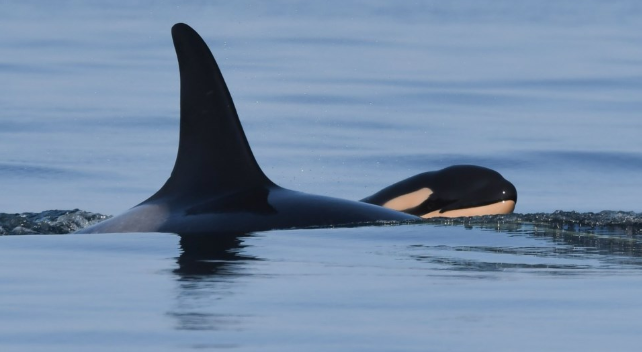||| FROM ST. ALBERT GAZETTE |||
The southern resident killer whale known as Tahlequah captured global sympathy in 2018 when she pushed the body of her dead calf for more than two weeks in waters off British Columbia’s south coast.
Some scientists and advocates called the scene a display of public grief.
But the impact of the loss went beyond Tahlequah. It was a significant blow to the entire population that numbers just 74 individuals.
Recent research suggests a baseline rate of population loss of roughly one per cent per year — based on modelling and 40 years of observations — putting the whales on a path toward a “period of accelerating decline that presages extinction.” Even that rate of loss is “optimistic,” the research says.
The study lends urgency to calls by a coalition of environmental groups for the Canadian government to reverse its decision not to issue an emergency protection order for the whales, in the face of what may otherwise be inexorable decline.
The top ocean predators are classified as endangered under Canadian and U.S. species-at-risk laws, which are meant to trigger protections. But the measures haven’t yielded any signs of recovery for the whales, says the coalition that includes the David Suzuki Foundation and the Raincoast Conservation Foundation, among others.
Misty MacDuffee, a conservation biologist with Raincoast, said the whales’ long potential lifespans may obscure their journey towards extinction — Parks Canada says a whale known as Granny was estimated to be 105 years old when she died, though that age has been disputed.
“We always have to remember that these are long-lived animals, and the population can be going extinct over decades simply because those animals are still alive,” said MacDuffee, a co-author of the recent study.
She said the research published in the journal Communications Earth & Environment in April shows “there is no possibility of recovery” for the southern residents under existing conditions in their habitat.
The study notes that in a population of 75 whales, “a single birth or death represents an annual population growth or decline of 1.4 per cent, underscoring the value of each individual in preventing the disappearance of a population.”
“It’s so down to the wire for these whales. Had we acted a decade ago … then we might not be in this situation. We’ve done very little,” MacDuffee said.
“The government is making decisions to say, ‘Well, the economics and these other objectives override the recovery of these whales.'”
As the threats pile up in the Salish Sea, the busy marine corridor off B.C.’s south coast where the southern residents feed on chinook salmon, scientists say the whales’ survival hangs by a thread.
**If you are reading theOrcasonian for free, thank your fellow islanders. If you would like to support theOrcasonian CLICK HERE to set your modestly-priced, voluntary subscription. Otherwise, no worries; we’re happy to share with you.**








